Every year, after Christmas presents are given and exchanged in December, tech nerds trek out to Las Vegas for one last gift: the annual Consumer Electronics Show. “It’s part of my job,” we tell people in our best world-weary, I-am-so-important voices. And then we watch drones fly in cages, play with AR/VR headsets, and stand mesmerized wondering how (and why) Ford managed to hang a car on a wall.
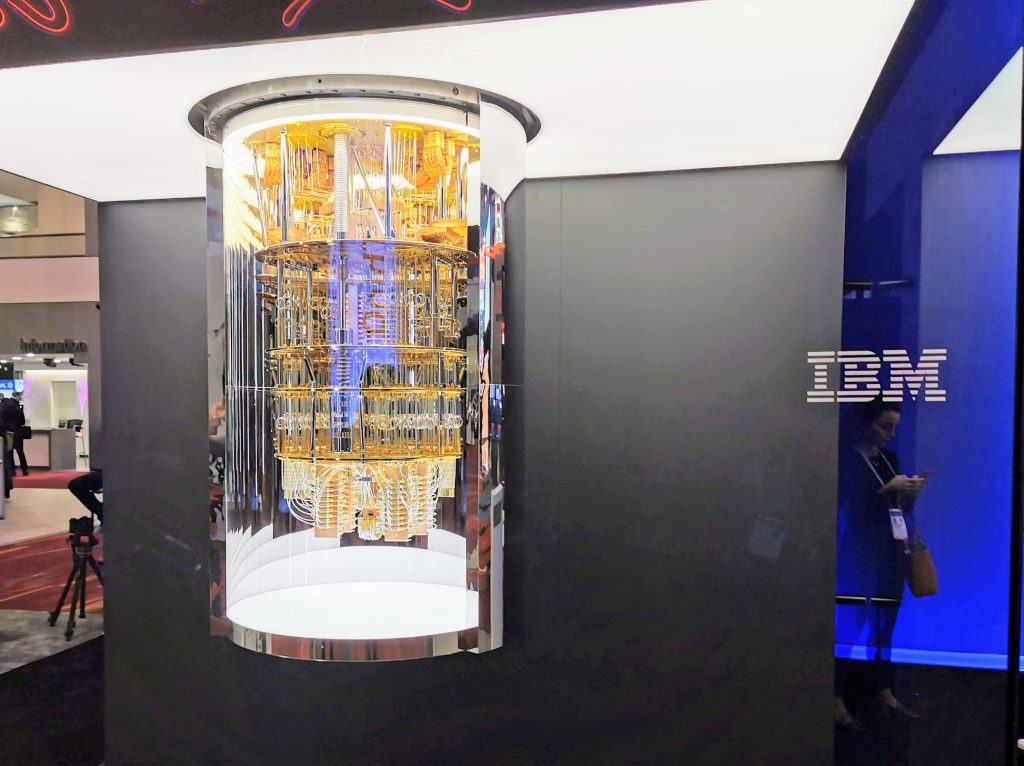
OK, there’s more to CES than seeing cool tech (and wall-hangings). Businesspeople come to make deals, hundreds of panels of experts discuss almost every tech topic imaginable, and there might be a few parties.
The show floor is crawling with reporters looking for the best, the weirdest, and every adjective-est they can find.
But the show also implicitly provides us information about what the consumer tech industry itself thinks is or will soon be important and the countries in which the relevant work is occurring. Specifically, the exhibitor list provides us the name of each company in the exhibit halls, the country in which it is located, and the technology sectors in which it operates.
CES Is Growing
The number of exhibitors at CES is steadily growing. The number of exhibitors has almost doubled since 2011, at close to 4500 in 2020.
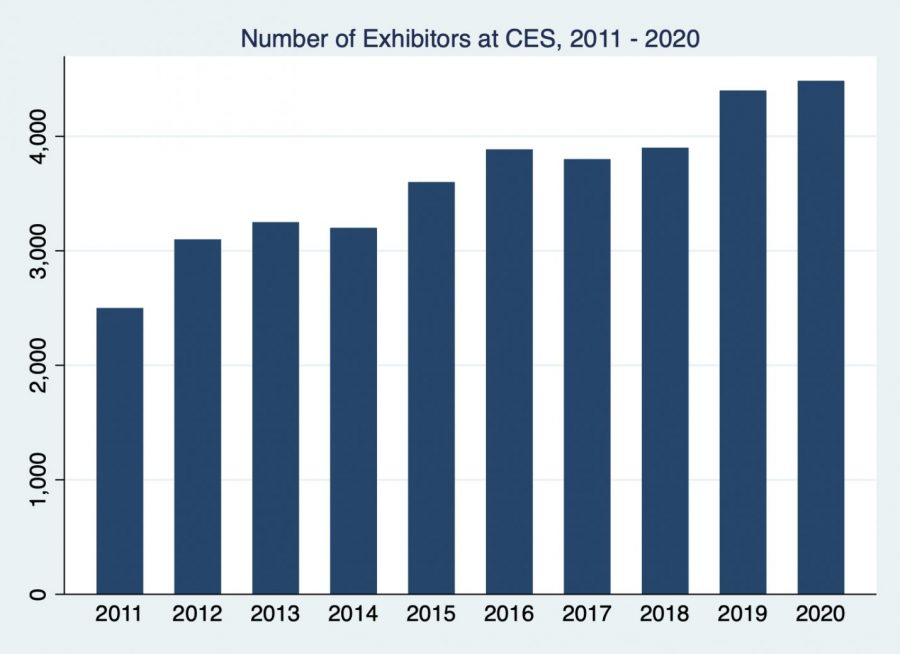
Wireless, Smart Homes, and Vehicles are a Big Deal
Exhibitors also categorize their products into several types of tech. The table below shows the share of exhibitors categorizing themselves into each type. The can categorize themselves into multiple categories. Samsung, for example, tagged itself in ten categories, for example. The median number of categories per exhibitor is three.
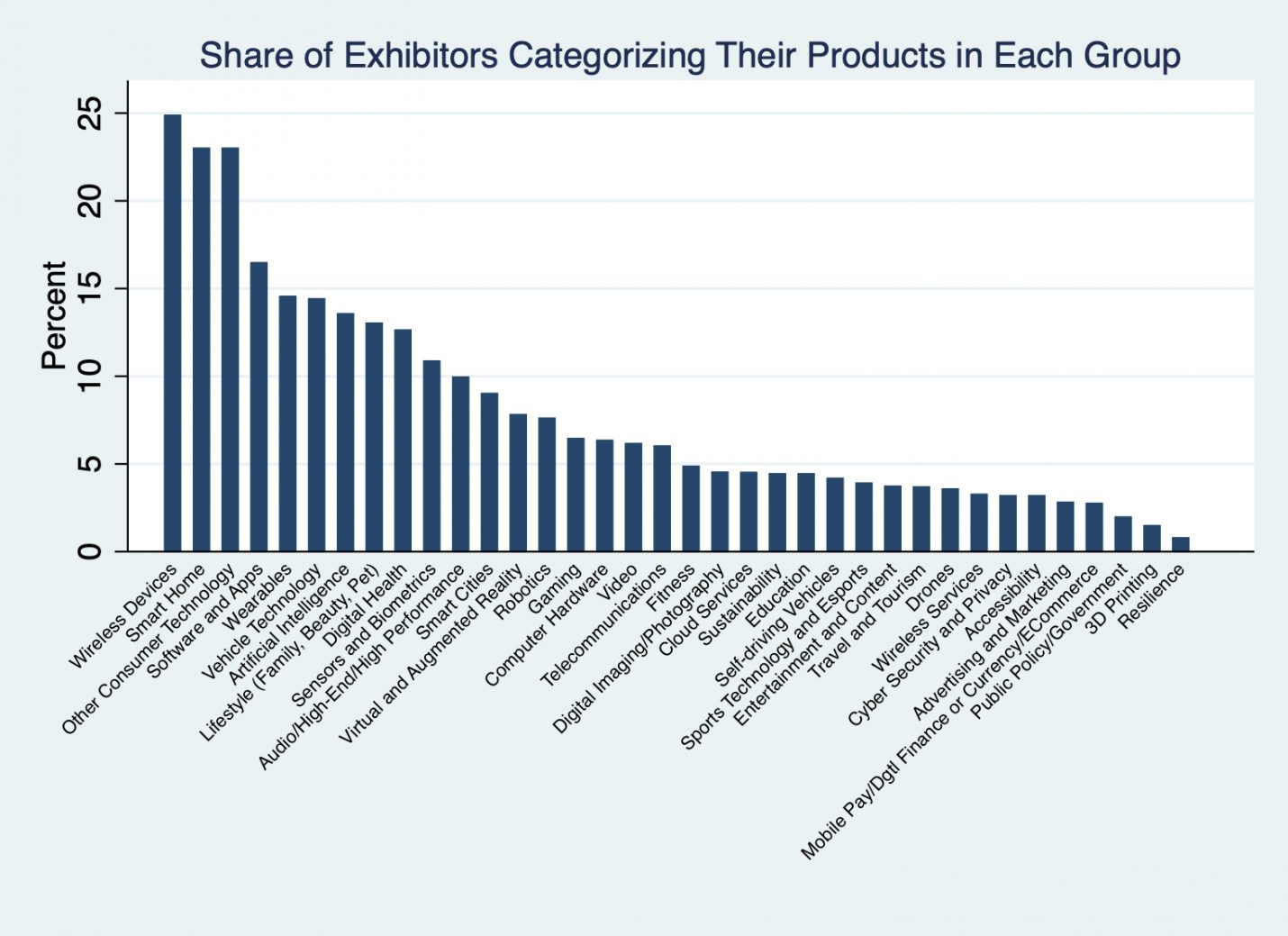
Although “wireless devices” is the most common category, it is too broad to convey much information. But over 1,000 exhibitors said they work on “Smart Home” products, making it the most popular of an identifiable class of products. Ignoring the ever-popular “other” category, “Software and Apps” and “Wearables” come in as the two next most popular categories.

Technology related to vehicles and transportation is more popular than the figure implies. More than 800 exhibitors, or about 18 percent of all exhibitors, classified themselves as “Vehicle Technology,” “Self-Driving Vehicles,” or “Drones.” These also clearly dominated in terms of space on the show floor, although that is to be expected given how much space is required to display a car compared to a Fitbit.
Because exhibitors can list multiple categories, counting combinations of categories can be instructive. The table below shows the number of exhibitors listing at least the two listed categories. The table shows the most common combination to be “Smart Home” and “Wireless Devices.” The entire list of 611 combinations is available here.
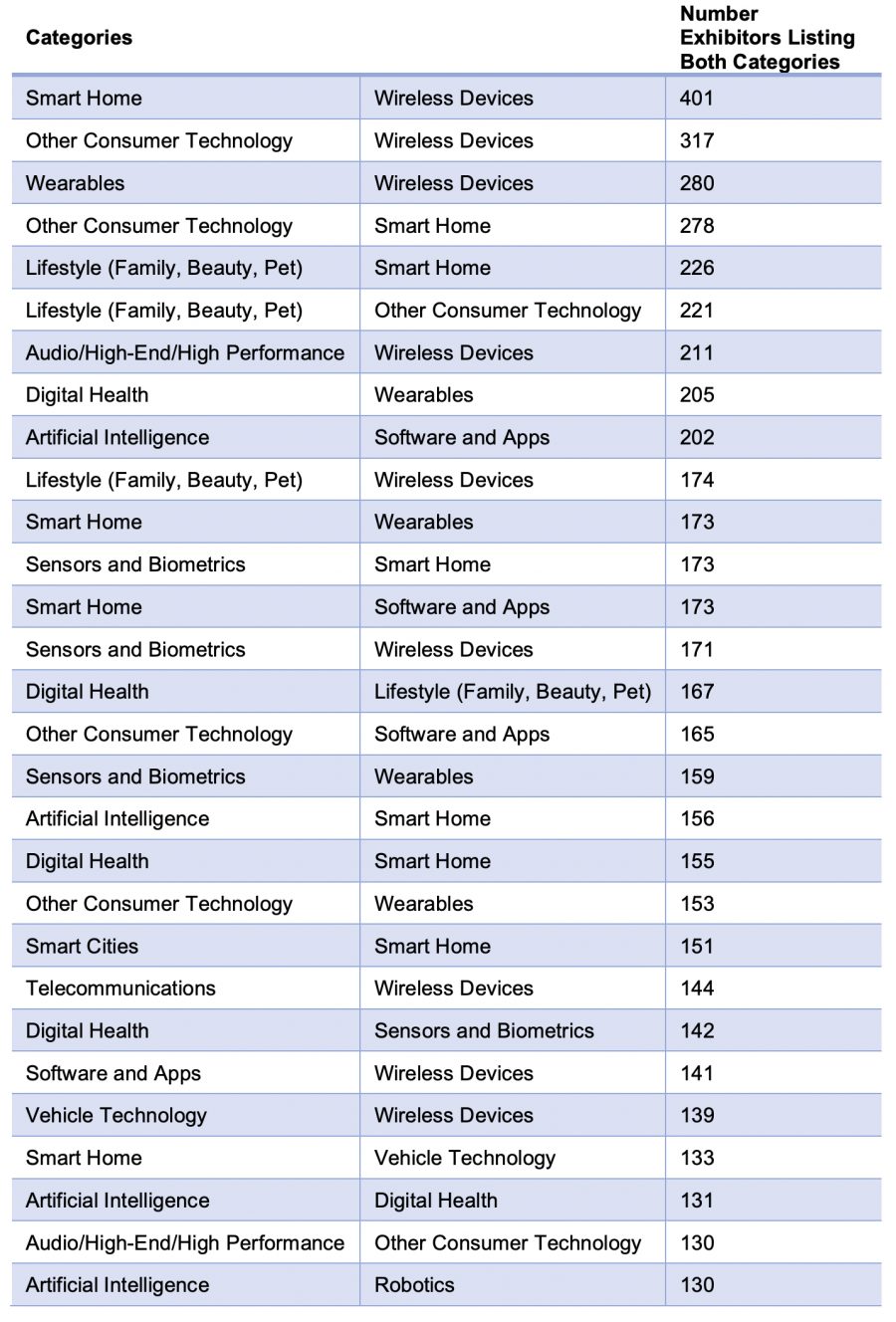
U.S. and China Dominate
The number of exhibitors by country shows a distribution with a long tail. The U.S. and China have, by far, the largest number of exhibitors at CES (1,636 and 1,096, respectively), with the number by country dropping off rapidly. South Korea is a distant third, with 376 exhibitors, followed by France with 258, Taiwan with 242, Canada with 93, Israel with 74, Japan with 73, The Netherlands with 66, and Italy rounding out the top ten with 65.
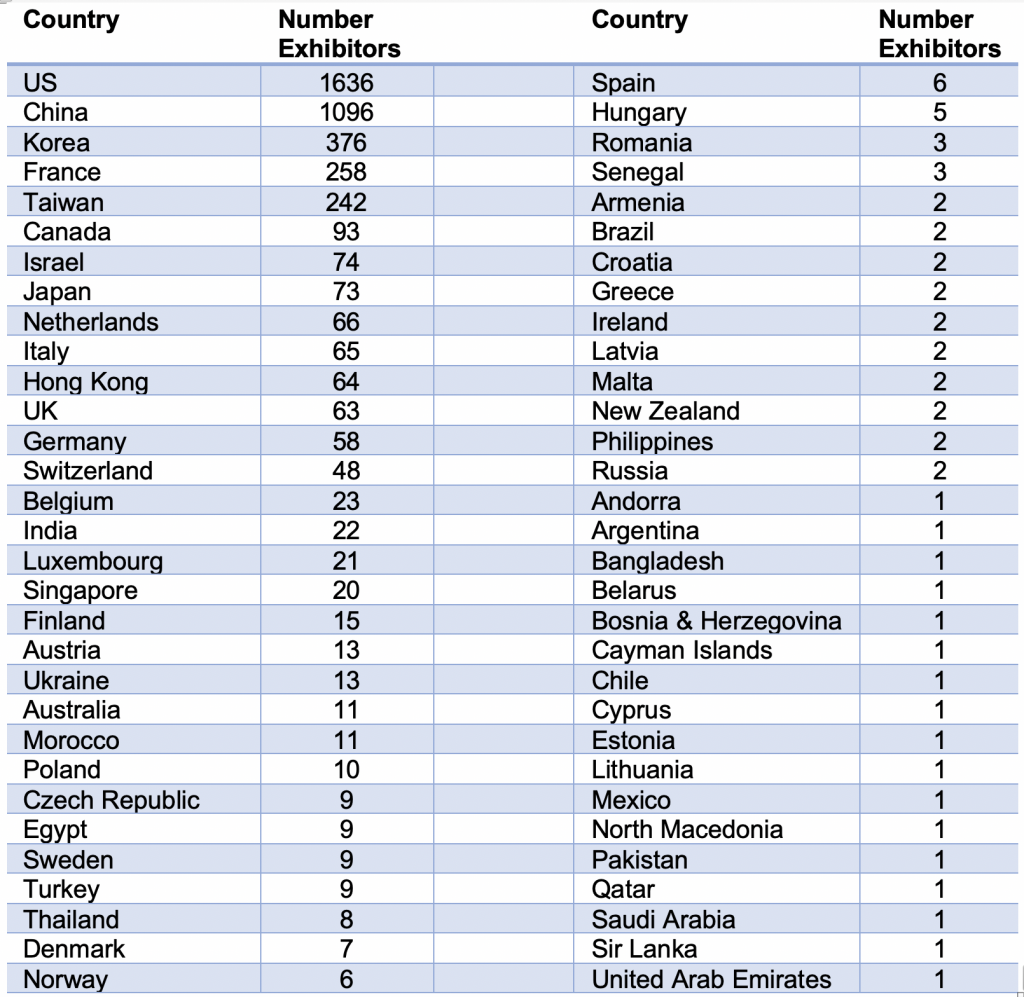
Taiwan, Luxembourg, Korea, and Israel: The Hidden Powerhouses
It is not surprising that the biggest countries — the U.S. and China — have the largest number of exhibitors. The size of their economies and populations mean we should expect them to dominate in terms of sheer numbers. Normalizing the number of exhibitors by the size of a country’s economy, however, yields a different ranking, as the table below shows
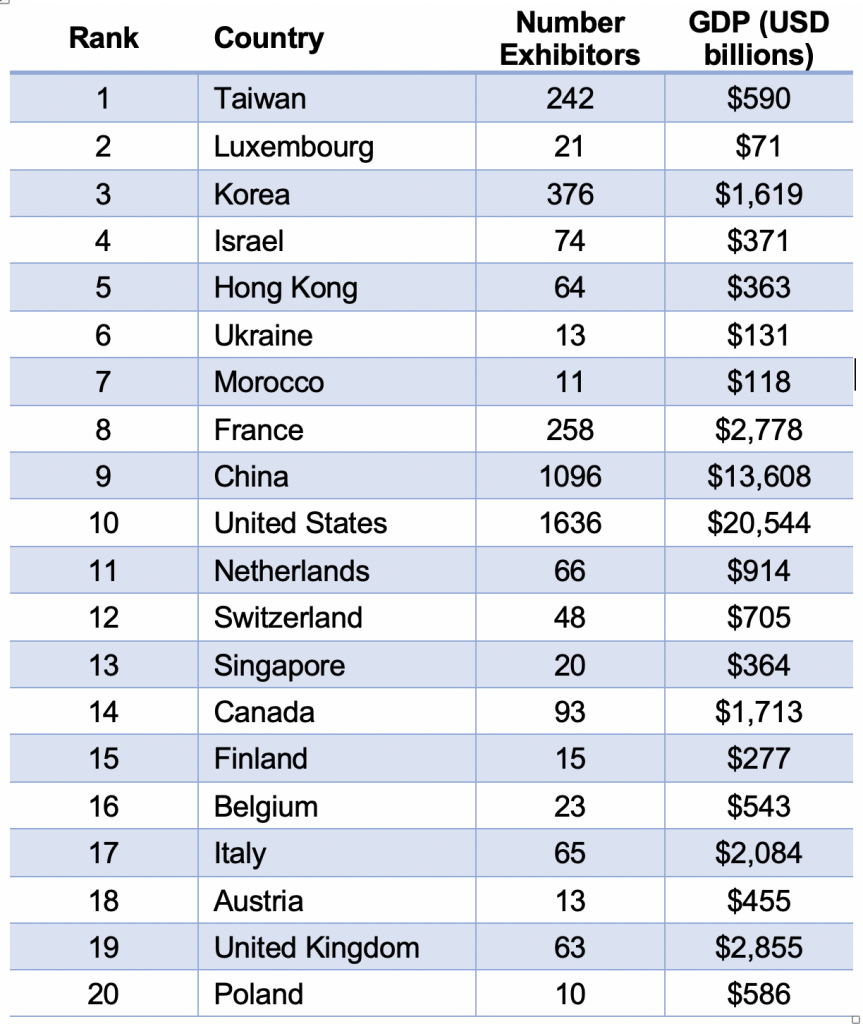
There is no single “correct” way to do this normalization — should it be by the size of the economy, population, or maybe per capita income, for example? It is also reasonable to argue that normalization is unnecessary given the agglomeration economies that occur from having lots of innovation in one place. Moreover, at some point the normalization becomes absurd. A tiny country with one exhibitor could vault to the top of the list, but the small numbers issue makes it impossible to draw any conclusions.
Still, the normalized numbers show us some of the smaller countries that probably should not be ignored in terms of innovation.
The Number of Chinese Exhibitors is Dropping. Why?
The number of exhibitors from China at CES increased from 400 in 2011 to 1,575 in 2018, and then decreased in 2019 and 2020. One possible reason is trade tensions and increased difficulties in obtaining visas from China to attend. Another reason, however, is probably CTA’s relatively new CES Asia event. Taking place in Shanghai, China, CES Asia launched in 2015. The next one will take place June 10-12, 2020. It has grown steadily. In 2019 more than 500 exhibitors showed up, about 75 percent of which were Chinese companies. Some Chinese companies, particularly smaller ones with fewer resources, may choose to exhibit at CES Asia instead of CES.
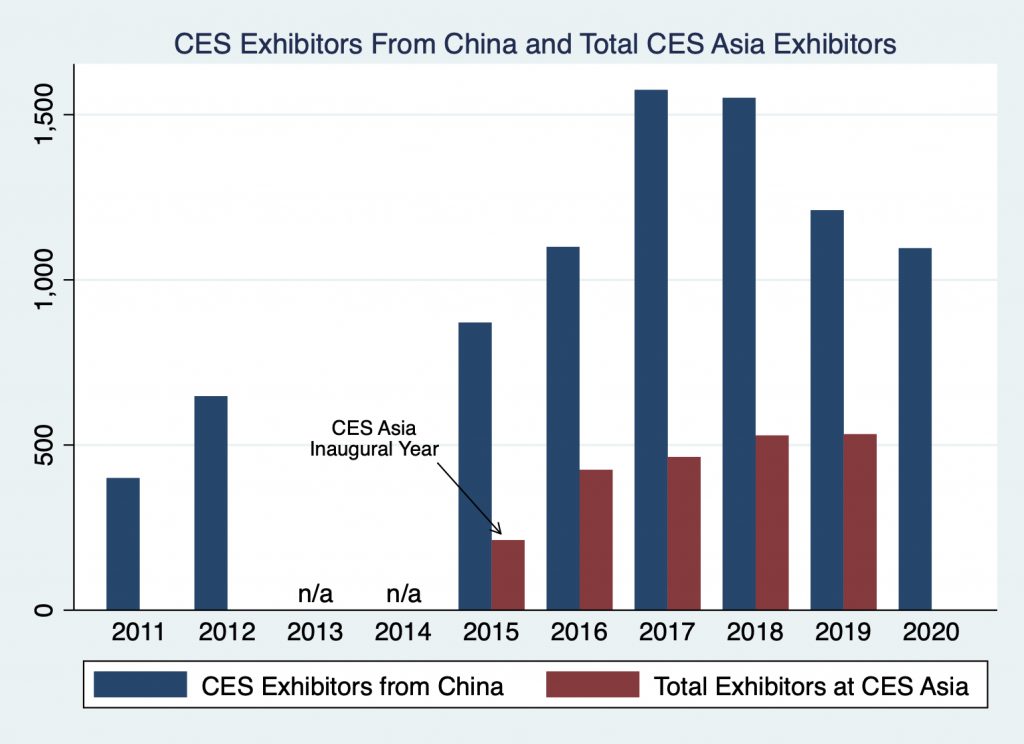
Caveat
Any inferences from counts of exhibitors should be taken with a helping of salt. Comparing counts assumes that each exhibitor and exhibition is identical, which is not at all true. LG’s massive and interactive exhibit with a large number of employees on hand to answer questions on dozens of products is much different from a 10 foot x 10 foot booth with one employee who may or may not be too busy eating lunch to interact with passers-by.
Still, information derived from the types of exhibitors and the information they provide gives some indication of what technologies companies have been focusing on and what they expect to be popular in the coming years.
Scott Wallsten is President and Senior Fellow at the Technology Policy Institute and also a senior fellow at the Georgetown Center for Business and Public Policy. He is an economist with expertise in industrial organization and public policy, and his research focuses on competition, regulation, telecommunications, the economics of digitization, and technology policy. He was the economics director for the FCC's National Broadband Plan and has been a lecturer in Stanford University’s public policy program, director of communications policy studies and senior fellow at the Progress & Freedom Foundation, a senior fellow at the AEI – Brookings Joint Center for Regulatory Studies and a resident scholar at the American Enterprise Institute, an economist at The World Bank, a scholar at the Stanford Institute for Economic Policy Research, and a staff economist at the U.S. President’s Council of Economic Advisers. He holds a PhD in economics from Stanford University.


